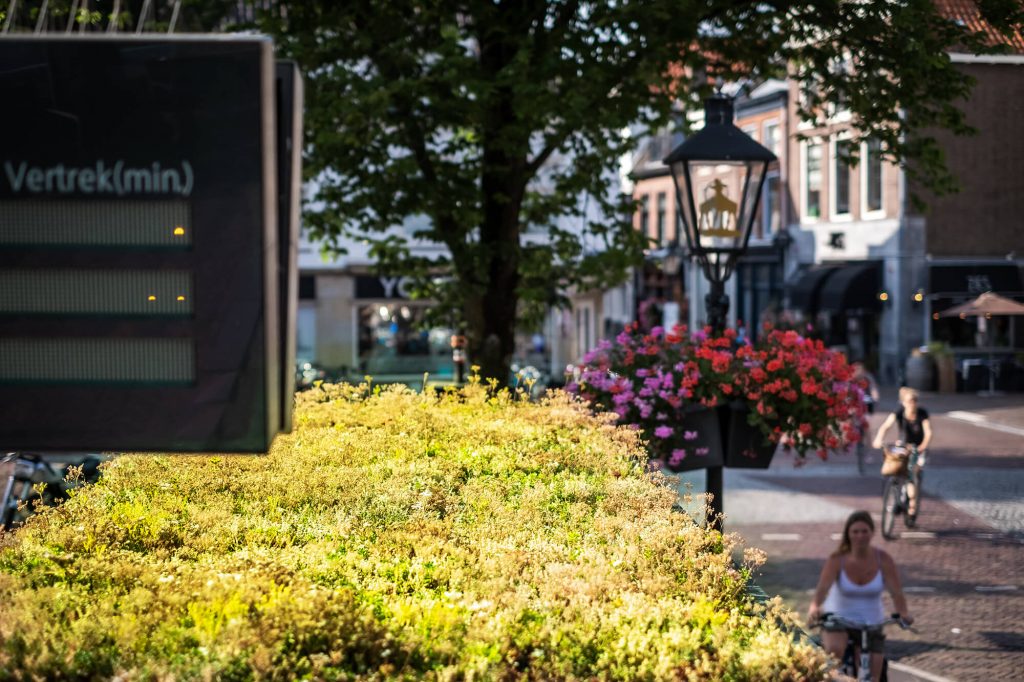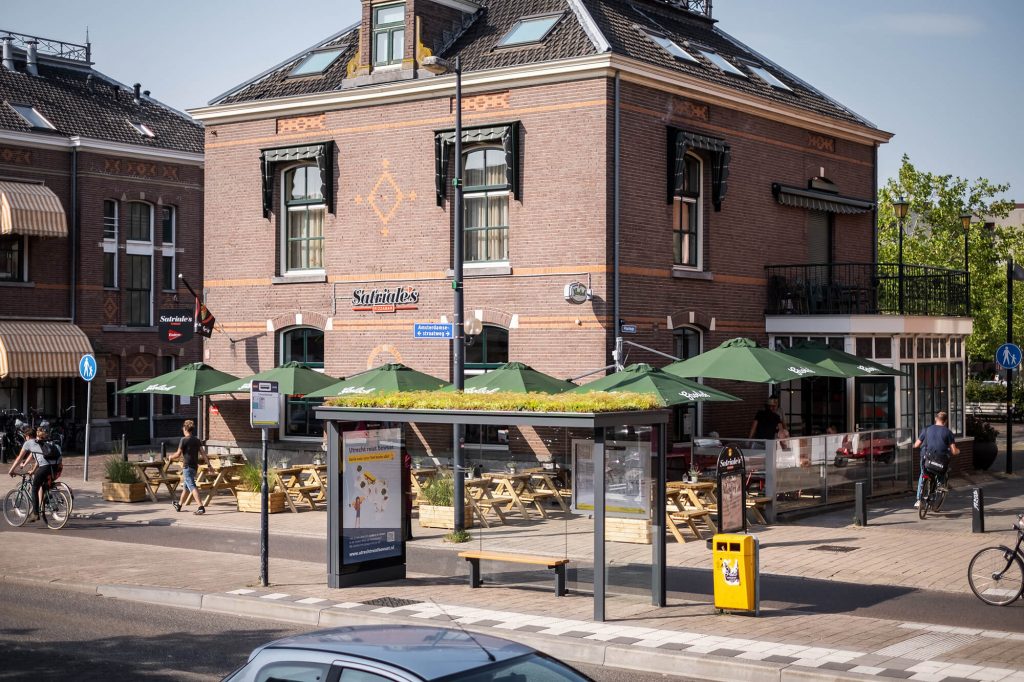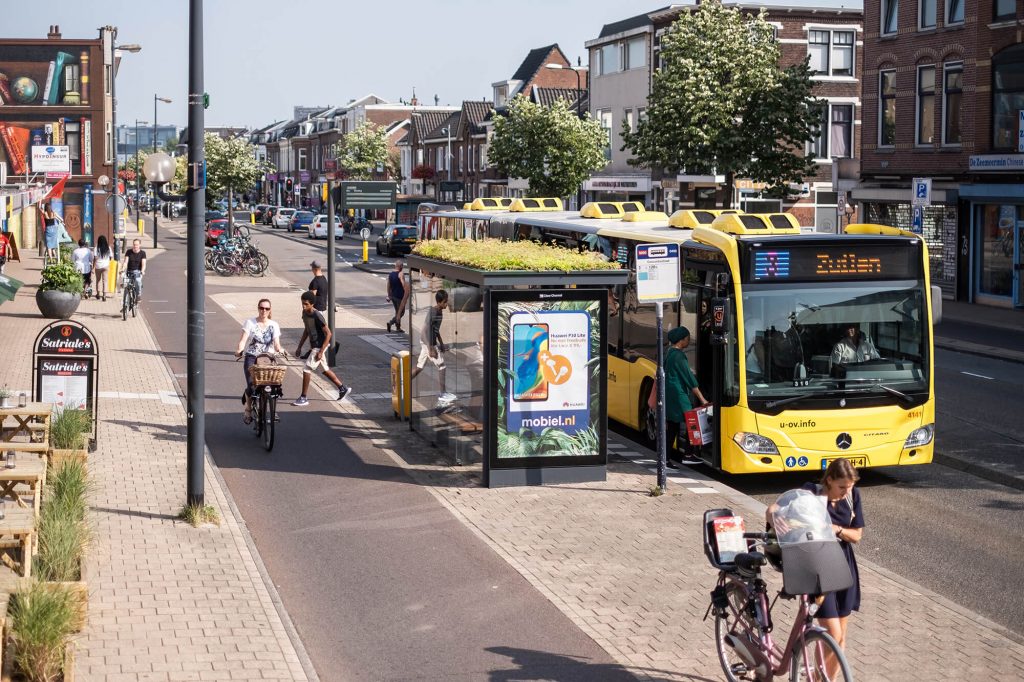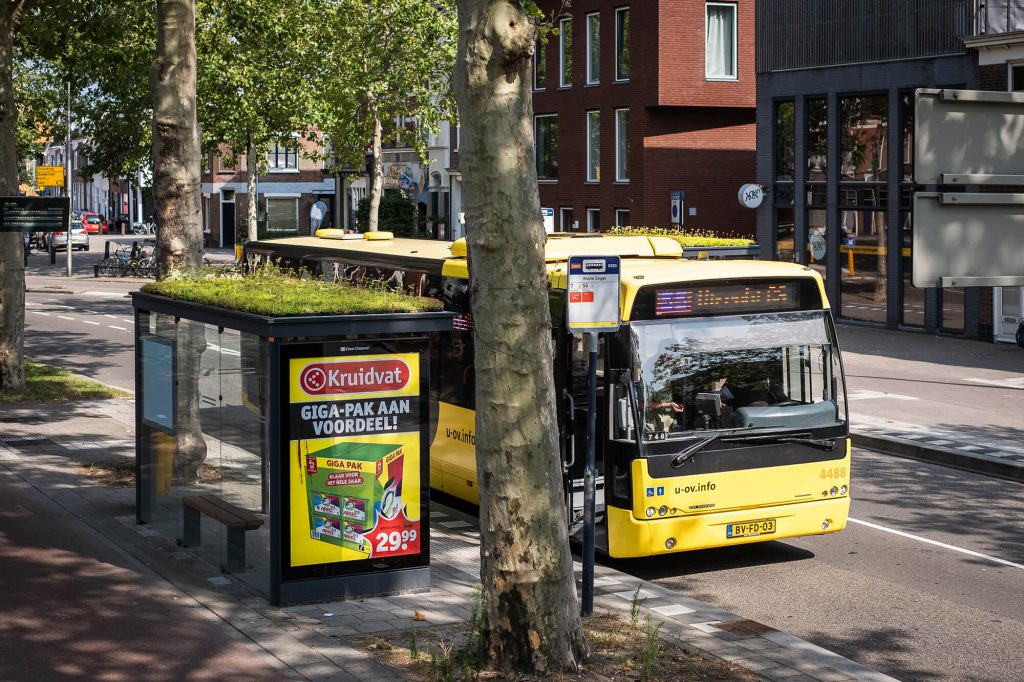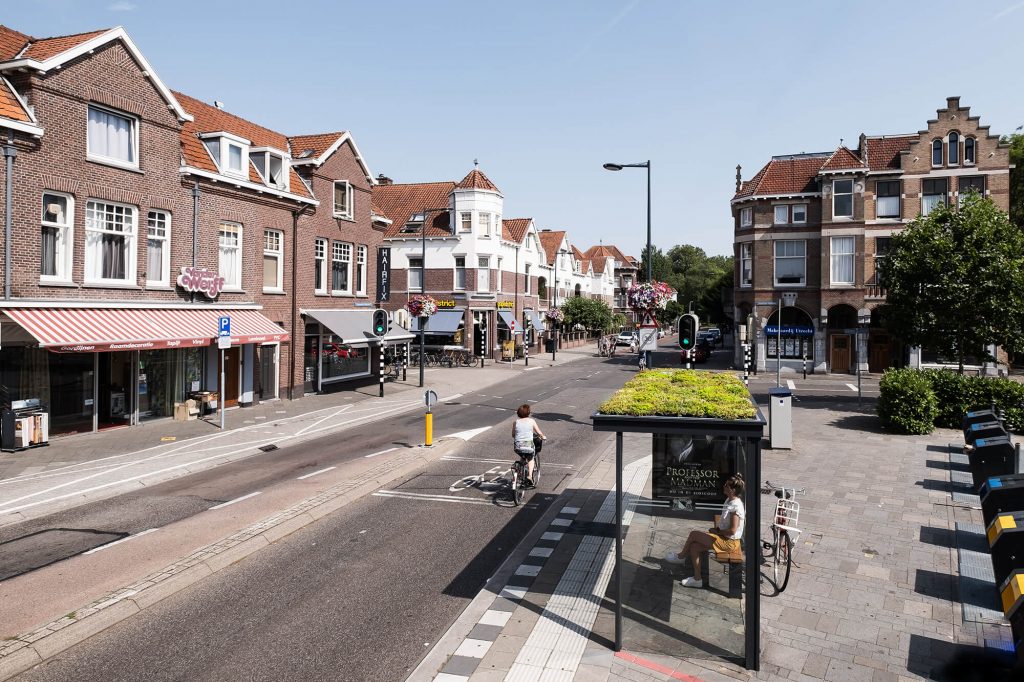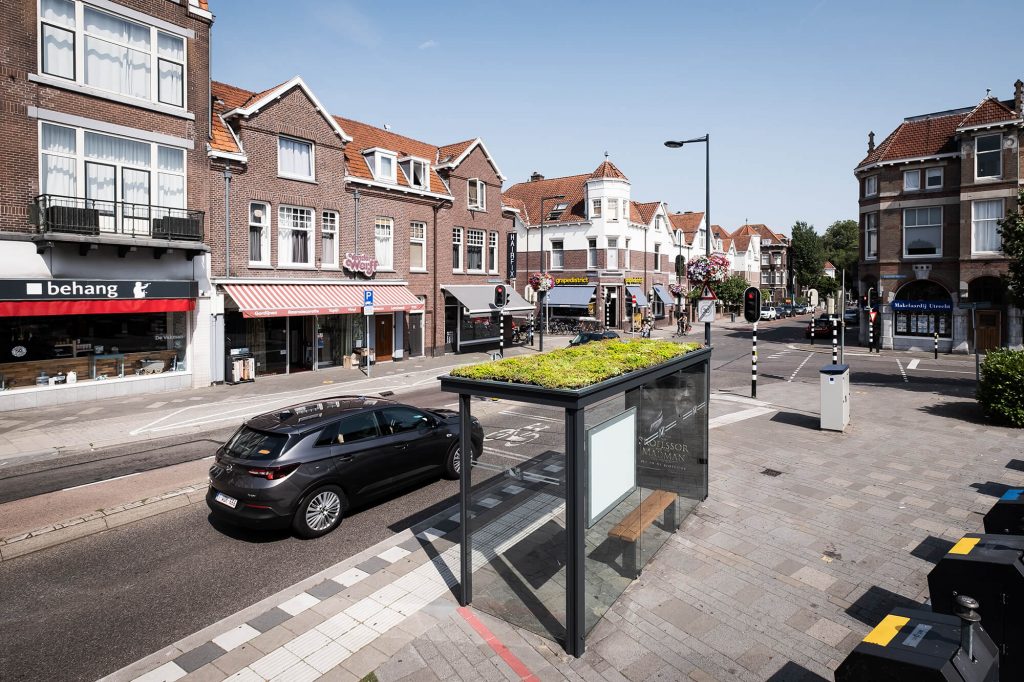Green roofs on bus shelters in cities
- Green roof: MobiRoof ECO
- Location: Utrecht, The Nederlands
Increased urbanisation is a major cause of the Urban Heat Island effect (UHI). The combination of the height of buildings and narrow streets causes increased surface reflection and a stronger absorption of heat radiation. The friction of air molecules in these narrowed alleys also reduces wind speed in cities, reducing cooling potential. As rainwater is often drained quickly and disappears largely underground, there is relatively little water left to evaporate. In addition, a reduction in green areas in cities means a reduction in evaporation – one of the most important factors in cooling the surface of the earth. This reduced evaporation has an adverse effect on the urban climate, as it is difficult to get rid of the water when needed. The heat lasts longer at night and the air quality decreases. All of this affects our health and also has negative economic impact.
More and more communities and cities are following the trend to make their city greener by planting on the roofs of bus stops. A green sedum roof on a bus shelter brings several advantages for the environment:
Storing rainwater
As wells as their cooling effects, the green roofs on the bus shelters store water. The sedum cassettes on the bus stops are filled with substrate so that the roof stores water and reduces rainwater run-off. As the water drains through all the layers of the cassette, its flow is slowed and some of the water evaporates. Due to climate change and the increase of hard paved surfaces in our cities, the drainage systems simply can not handle the rainwater supply fast enough. Introducing green roofs to bus shelters, for example, reduces the peak flow of water into the underground pipework.
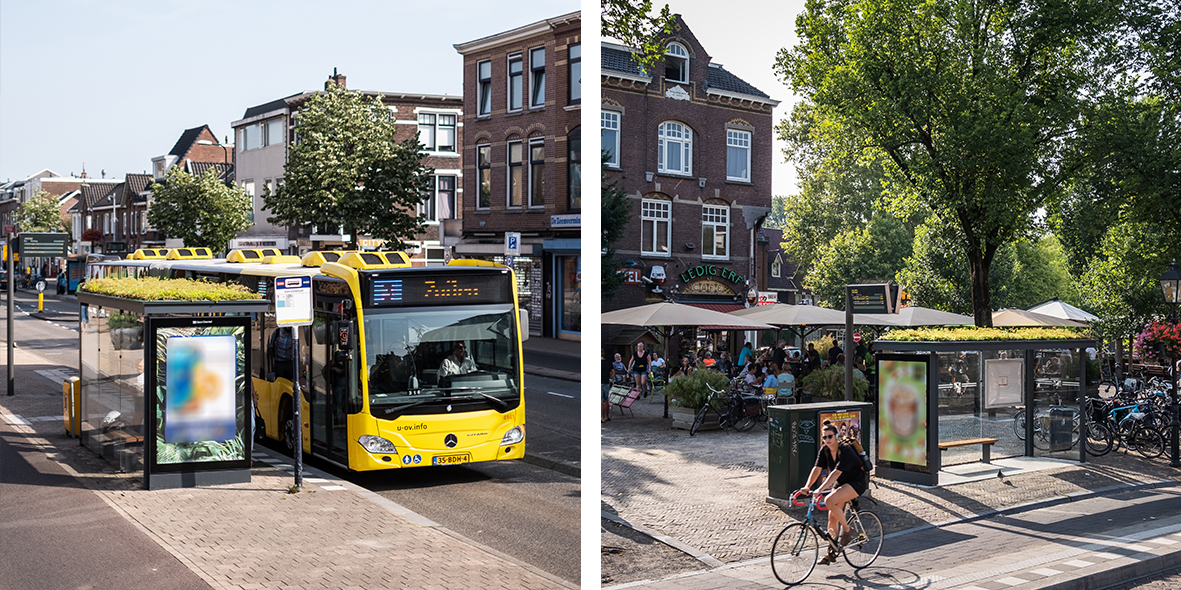
Fine dust filtration
In cities, air quality is often poor, due in large part to the level of emissions from transport and industry. In addition, the high building density restricts the quality and volume of air supply. The low proportion of green spaces in cities is not enough to compensate and clean the air. Foliage and a green environment can help purify polluted air by capturing particulate matter and absorbing gaseous contaminants. The sedum roofs on bus shelters filter the fine dust from the air and thus contribute to better city air quality.
Green roofs on bus shelters: Green awareness
These bus shelters with green roofs also heighten the awareness of the importance of greenery to those who live, work and visit these cities. Passing a green bus shelter on a daily basis will make heads turn – and make people think. In this way, local authorities can be seen to be proactive in improving their resident’s neighbourhoods and will raise awareness of the eco-benefits of these green roofs. Many local authorities even provide grants to encourage the greening of cities.



